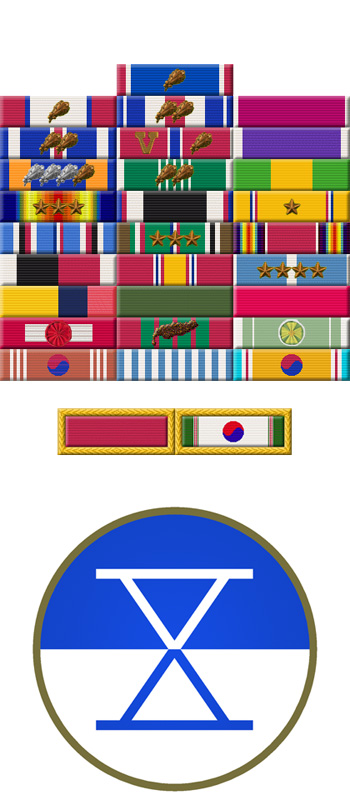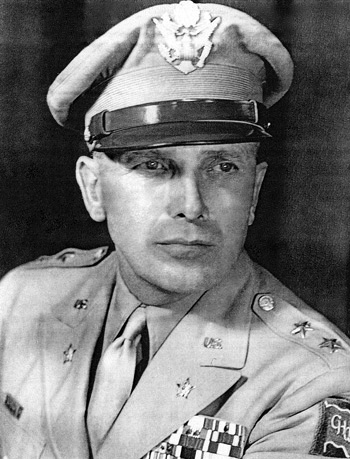
|
Edward M. Almond |
 |
|||
| Rank, Service | ||||
Lieutenant General O-9, U.S. Army |
||||
| Veteran of: | ||||
|
||||
| Tribute: | ||||
Edward Almond was born on December 12, 1892, in Luray, Virginia. He graduated from Virginia Military Institute in 1915, and was commissioned a 2d Lt of Infantry in the U.S. Army on December 1, 1916. Almond served with the 4th Infantry Division in France during World War I from June to November 1918, and then remained in Europe on occupation duty until returning to the U.S. in 1919. Capt Almond taught military science at Marion Institute, Alabama, from 1919 to 1923, and then attended the Infantry School at Fort Benning, Georgia. He remained on the staff at the Infantry School until the end of 1928, when he entered the Command & General Staff School at Fort Leavenworth, Kasas. After graduating, Maj Almond served in the Philippines from 1930 to 1933, and then attended Army War College from 1933 to 1934. His next assignment was attached to the Intelligence Division of the General Staff in Washington, D.C., where he served from 1934 to 1938, followed by Naval War College from 1939 to 1940. He again served on the General Staff from 1940 to 1941, and then served on the staff of Headquarters VI Corps in Providence, Rhode Island, from January 1941 to March 1942. Gen Almond next served as Assistant Commander of the 93rd Infantry Division from March to July 1942, followed by service as Commanding General of the 92nd Infantry Division from July 1942 to August 1945. During this time he took the division into combat in Italy from August 1944 until the end of the war in Europe. His next assignment was as Commanding General of the 2nd Infantry Division at Fort Lewis, Washington, from September 1945 to May 1946, and then as Deputy Chief of Staff for Far Eastern Command in Tokyo, Japan, from June 1946 to February 1949. Gen Almond then served as Chief of Staff of Far Eastern Command under General MacArthur from February 1949 to September 1950, when he took command of X Corps in Korea. He commanded X Corps during the initial amphibious invasion at Inchon and during combat in Korea until July 1951, when he returned to the U.S. Gen Almond's final assignment was as Commanding General of the Army War College, where he served from August 1951 until his retirement from the Army on February 1, 1953. Edward Almond died on June 11, 1979, and was buried at Arlington National Cemetery. |
||||
|
||||

